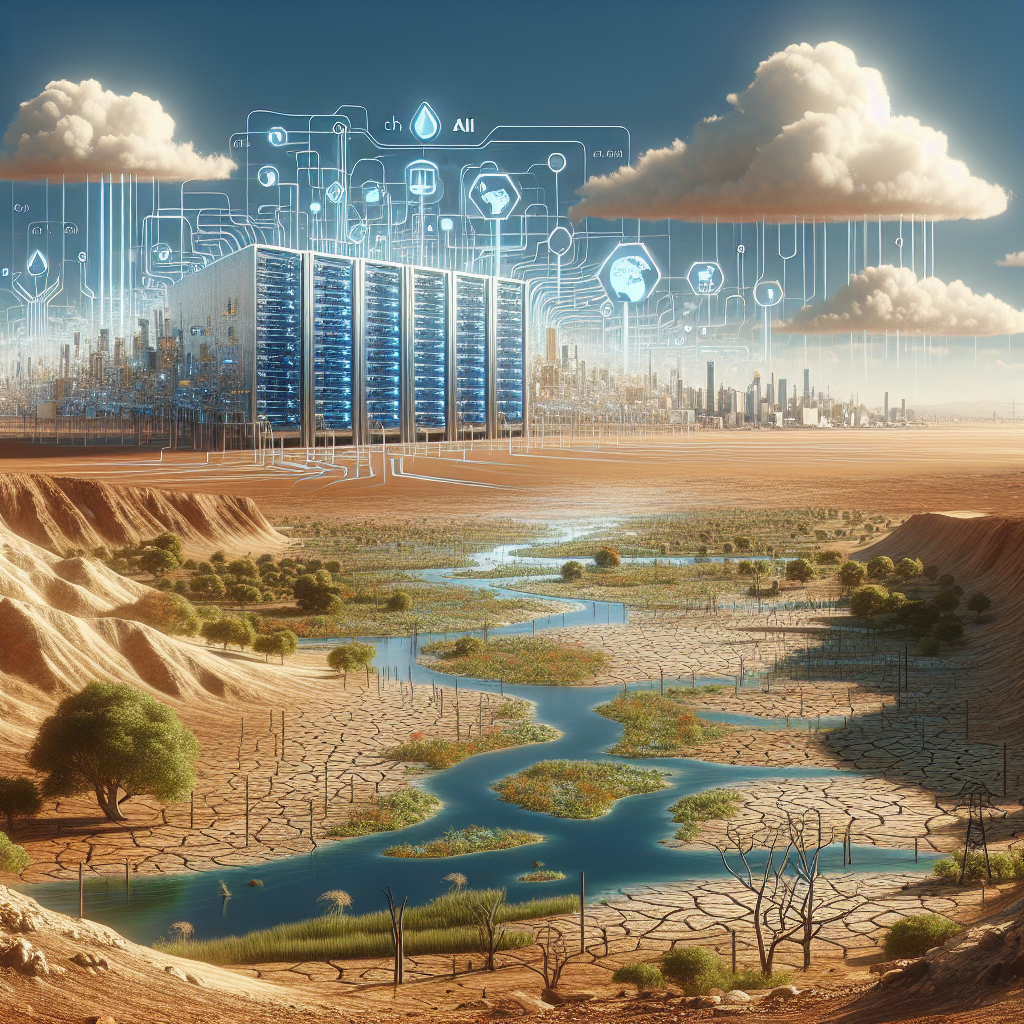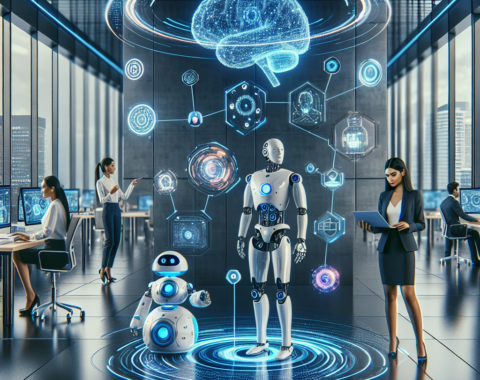
AI’s Water Usage Impact: Understanding Droughts with ChatGPT and Microsoft
As the impact of climate change becomes increasingly severe, technology companies are facing growing scrutiny over their resource consumption. One particular area of interest is the use of water in the operation of artificial intelligence systems. Microsoft, a leader in AI development, and its AI-powered tool, ChatGPT, have come under the spotlight for their water usage.
The Connection Between AI and Water Usage
Artificial intelligence systems, particularly large-scale models like ChatGPT, require substantial computational power. This power is provided by data centers that are not only energy-intensive but also require significant amounts of water for cooling purposes.
Why Water is So Important for AI
- Cooling Data Centers: AI requires robust data processing capabilities. Ensuring these servers run efficiently involves maintaining appropriate temperatures, typically through water-cooling systems.
- Maintenance of Equipment: Water is crucial for routine maintenance and optimal functioning of data processing hardware.
With the increased reliance on cloud computing and artificial intelligence, the demand for water is expected to grow. This necessity poses significant challenges, especially in regions that are already facing drought conditions. The conundrum lies in balancing technological advancement with sustainable practices.
The Role of Microsoft
Microsoft, one of the pioneers in the AI field, has taken notable steps to identify and address the environmental impact of its operations. The company’s investment in AI technologies, including ChatGPT, demonstrates its commitment to innovation while simultaneously acknowledging the need for sustainable practices.
Microsoft’s Strategies for Reducing Water Usage
Microsoft is proactively working to mitigate the impact of its operations on water resources:
- Data Center Innovations: Microsoft has invested in eco-friendly data centers that utilize cutting-edge water conservation techniques, including advanced cooling technology that significantly reduces water dependency.
- AI for Earth Initiative: Part of Microsoft’s environmental efforts involves developing and deploying AI solutions that address crucial environmental issues, including water conservation and drought prediction.
By integrating sustainable practices into the fabric of its operations, Microsoft aims to set a benchmark in resource conservation, ensuring that technological advancement does not come at the cost of our natural resources.
ChatGPT: A Case for Responsible AI Usage
ChatGPT, as an artificial intelligence system, represents both the potential and peril of AI’s resource demands. Developed using vast computational resources, its role in facilitating conversations presents an array of possibilities in fields like customer service, education, and entertainment. However, its operations are resource-intensive, contributing to water usage.
The Environmental Implications of ChatGPT
Understanding ChatGPT’s water usage is essential to addressing these environmental concerns:
- Resource-Intensive Training: Training language models like ChatGPT requires enormous processing power, impacting water usage due to cooling needs.
- Scalable Solutions: The widespread utility of ChatGPT necessitates scalable solutions that minimize resource consumption across various applications.
Efforts to develop and use AI responsibly thus become key to ensuring that innovations do not lead to unsustainable resource consumption.
Addressing Droughts with AI
AI technologies, despite their initial drawbacks, also offer solutions to some of the water challenges faced today. Understanding and utilizing such technologies can be a formidable asset in the fight against droughts.
How AI Contributes to Water Solutions
- Predicting Droughts: AI can analyze vast datasets to predict weather patterns and drought risks, aiding in proactive water management strategies.
- Efficient Water Use: AI systems like Microsoft’s initiatives in smart agriculture utilize data to recommend optimal water usage techniques.
By leveraging AI, we can not only minimize its resource usage but also utilize its potential to enhance our management of natural resources, developing systems that are both innovative and sustainable.
The Path Forward: Balancing Technology and Sustainability
The challenge lies in fostering innovation without compromising the planet’s valuable resources. With companies like Microsoft leading the charge, the possibilities for developing AI technologies that are both progressive and sustainable are promising.
As advances in AI continue, it is crucial to support the development of technologies that prioritize sustainable resource use. Through responsible innovation, we can find the balance needed between water usage and technological growth.
Furthermore, global cooperation and stringent policy frameworks will be indispensable in guiding the technology sector, ensuring that the new era of AI-driven solutions contributes positively to addressing global challenges like climate change and resource conservation. The future will depend on our ability to develop and adopt solutions that prioritize both technological progress and environmental stewardship.




